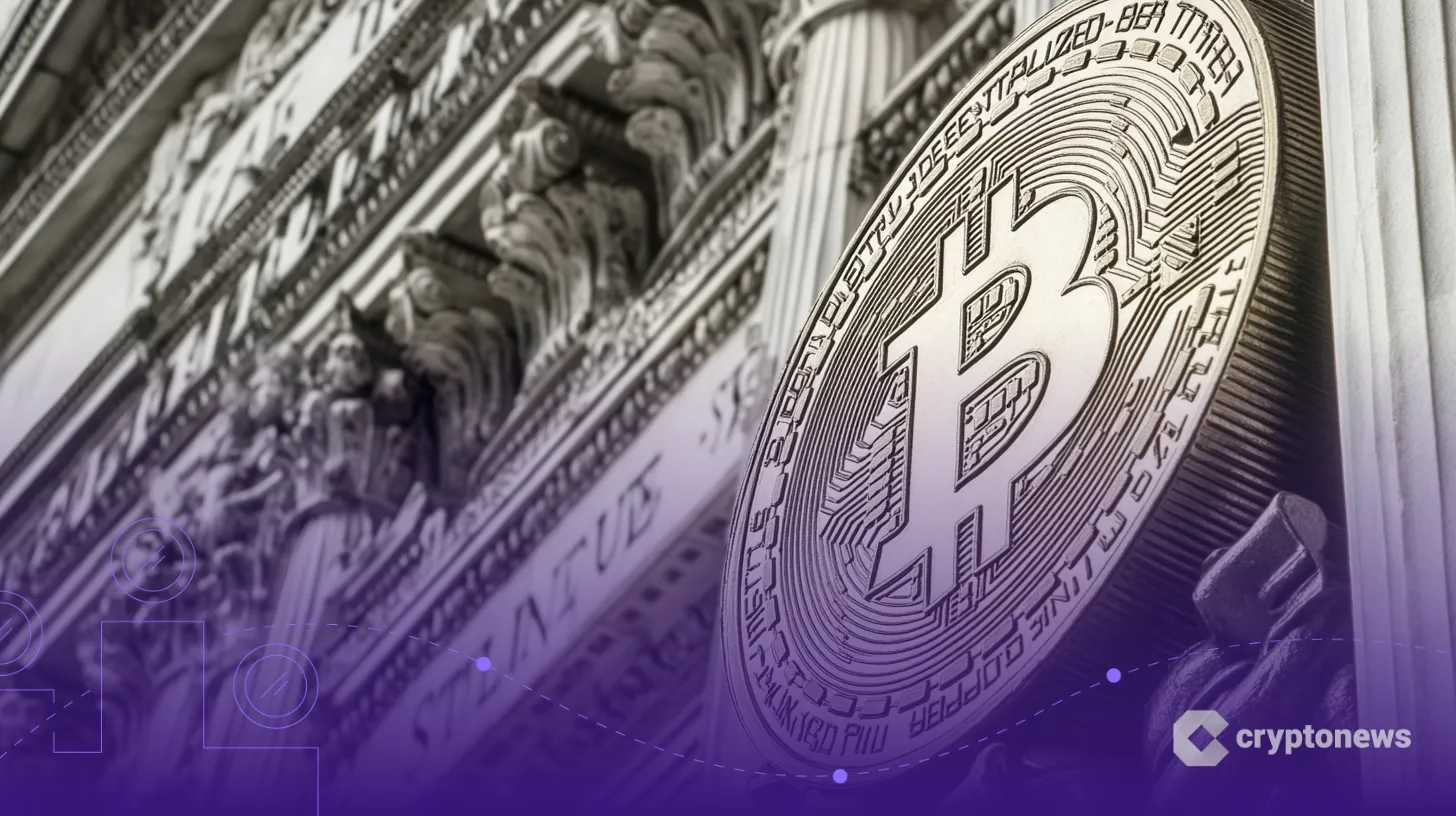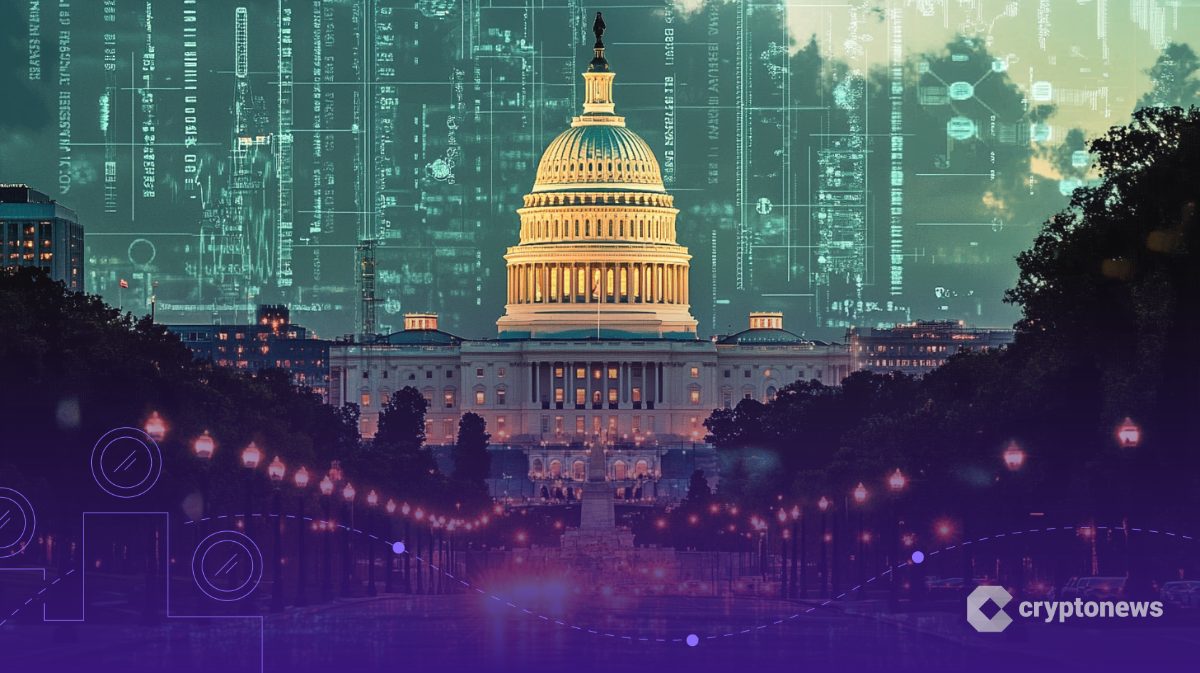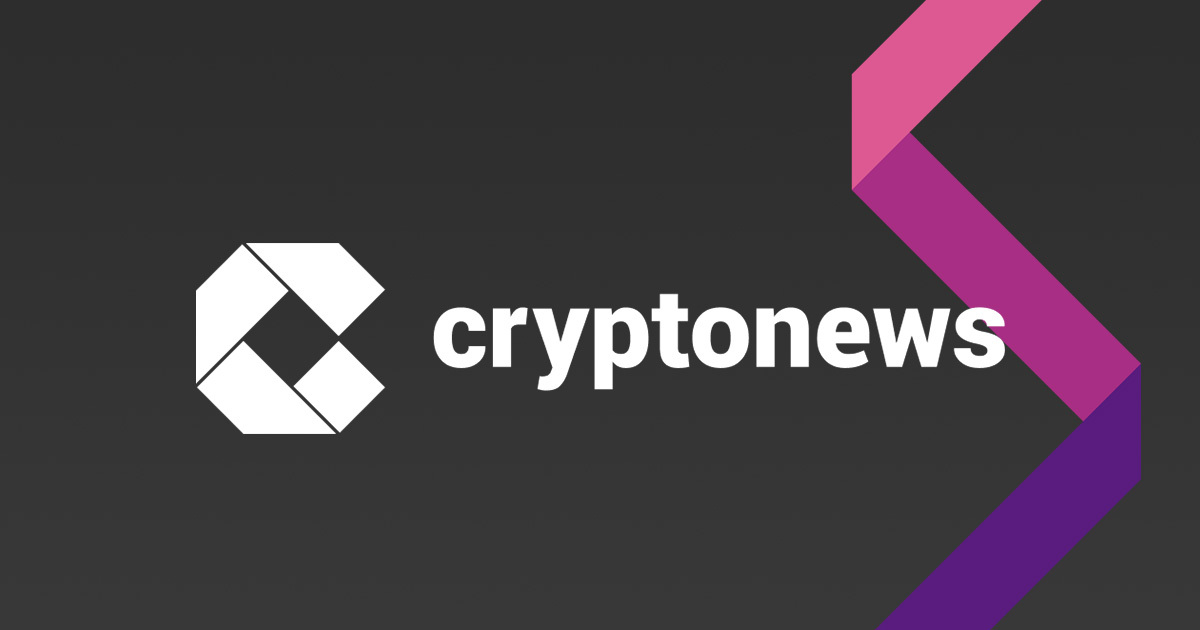Caitlin Long Slams Fed’s Secret Rule Giving Big Banks a Stablecoin Edge

Key Takeaways:
- Banks are still banned from holding crypto, stifling blockchain adoption.
- Senator Lummis links the US Fed to Operation Chokepoint 2.0 crackdown.
Caitlin Long, CEO of Custodia Bank, accused the US Federal Reserve of pretending to support crypto while quietly favoring big banks. The banking executive said the Fed rescinded four restrictive policies but left a key one in place from January 7, 2023, when the Biden administration pushed anti-crypto measures.
Why Did the Fed Keep One Key Anti-Crypto Rule?
According to a detailed April 27 thread on X, Caitlin Long explained that a key US Fed rule is quietly making it difficult for banks to get directly involved in crypto.
She broke it down into three simple points.
First, banks are not allowed to hold crypto for themselves, not even to cover small transaction fees, like gas fees needed to process blockchain transactions.
Second, banks are not allowed to create stablecoins on open, public blockchains like Ethereum.
Third, the Fed still strongly prefers private blockchains controlled by big banks, even though other regulators like the OCC and FDIC have moved away from that idea.
Long warns that this gives big banks a major advantage. They can launch private stablecoins while everyone else must wait for the new stablecoin bill to take effect.
The rule creates deeper problems for banks offering crypto custody services. When providing custody, banks must estimate gas fees before executing on-chain transactions. If fees increase above their estimate, the transaction fails.
Current rules prevent banks from paying these extra fees themselves, creating a major operational problem.
Custodians typically break large balances into smaller ones as a safety measure. But these internal transfers also require gas fees that banks can’t cover, effectively pushing them away from the custody business entirely.
This debate started after the US Federal Reserve, on April 24, announced the withdrawal of major pieces of guidance that had discouraged banks from engaging with crypto and stablecoins.
First, the Fed rescinded its 2022 letter requiring banks to notify before starting crypto activities.
Second, it withdrew two 2023 statements warning banks against working with potentially fraudulent crypto entities. Finally, it canceled a 2023 letter restricting state banks from issuing stablecoins.
The Fed originally implemented these rules to protect financial stability, consumers, and banking system integrity.
The move was seen as the Federal Reserve’s first big step on crypto under the Trump administration, which has promised to make the US more crypto-friendly and to support innovation.
The announcement received mixed reactions.
Michael Saylor, the founder of Strategy (the largest corporate holder of Bitcoin), welcomed the announcement as he noted that banks were now free to support Bitcoin.
Long offered a completely different view. She argued that the Fed’s move was mainly a PR spin that fooled many “smart people.” She pointed out that the Fed’s press release listed all guidance it dropped but strategically avoided mentioning what it kept in place.
Long also noted the White House praised the Fed’s actions, seemingly unaware of what actually happened. She suggested this raises questions about what the White House expected, what the Fed promised to do, and current Fed-White House relations.
Could State Laws Undermine the Fed’s Control Over Crypto?
While Long focuses on the Fed’s technical restrictions, the battle extends to Congress as well. The clash between federal control and state-level innovation continues to intensify.
US Senator Cynthia Lummis warns the crypto industry not to celebrate too early after the Federal Reserve has pulled back some crypto rules.
Lummis, often called “crypto’s savior” and “Bitcoin’s Godmother,” strongly supports crypto innovation. She led efforts like the BITCOIN Act and the Strategic Reserve Bill, both introduced in July 2024.
In a detailed X post, Lummis said the Fed’s move is mostly “lip service,” echoing Long’s concerns.
She explained that the Fed continues using “reputational risk” to control banks unfairly. Lummis highlighted that Section 9(13), an important part of the Fed’s policies, remains in place.
The Fed still labels Bitcoin and digital assets as “unsafe and unsound.”
Finally, she reminded everyone that many people behind the earlier crypto crackdown (Operation Chokepoint 2.0) still shape policy today.
Lummis plans to keep fighting and will hold Fed Chair Jerome Powell accountable until the crypto industry gets real, lasting support.
Frequently Asked Questions (FAQs)
The Fed’s restrictions on banks offering crypto services can push users toward DeFi platforms like Aave (for lending/borrowing), Uniswap, and PancakeSwap. These platforms enable self-custody and peer-to-peer transactions, bypassing banks entirely.
States like Wyoming, where Caitlin Long’s Custodia Bank is chartered, are leading efforts to attract blockchain businesses. Wyoming’s Special Purpose Depository Institution (SPDI) framework, for instance, allows banks like Custodia to offer digital asset custody and transactional services while avoiding some of the Federal Reserve’s strictest regulations.
The Fed prefers private blockchains for their control and privacy. Unlike public chains, these networks limit access to trusted players, mainly large banks. For example, JP Morgan’s stablecoin, the JPM Coin, operates on a permissioned network, while Mastercard’s Multi-Token (MTN) leverages the payment network’s private chain. Both fit the Fed’s strict rules, keeping settlements secured and regulated.
The post Caitlin Long Slams Fed’s Secret Rule Giving Big Banks a Stablecoin Edge appeared first on Cryptonews.
Read More

House Financial Services Committee Sets Digital Asset Innovation Hearing For Next Week
Caitlin Long Slams Fed’s Secret Rule Giving Big Banks a Stablecoin Edge

Key Takeaways:
- Banks are still banned from holding crypto, stifling blockchain adoption.
- Senator Lummis links the US Fed to Operation Chokepoint 2.0 crackdown.
Caitlin Long, CEO of Custodia Bank, accused the US Federal Reserve of pretending to support crypto while quietly favoring big banks. The banking executive said the Fed rescinded four restrictive policies but left a key one in place from January 7, 2023, when the Biden administration pushed anti-crypto measures.
Why Did the Fed Keep One Key Anti-Crypto Rule?
According to a detailed April 27 thread on X, Caitlin Long explained that a key US Fed rule is quietly making it difficult for banks to get directly involved in crypto.
She broke it down into three simple points.
First, banks are not allowed to hold crypto for themselves, not even to cover small transaction fees, like gas fees needed to process blockchain transactions.
Second, banks are not allowed to create stablecoins on open, public blockchains like Ethereum.
Third, the Fed still strongly prefers private blockchains controlled by big banks, even though other regulators like the OCC and FDIC have moved away from that idea.
Long warns that this gives big banks a major advantage. They can launch private stablecoins while everyone else must wait for the new stablecoin bill to take effect.
The rule creates deeper problems for banks offering crypto custody services. When providing custody, banks must estimate gas fees before executing on-chain transactions. If fees increase above their estimate, the transaction fails.
Current rules prevent banks from paying these extra fees themselves, creating a major operational problem.
Custodians typically break large balances into smaller ones as a safety measure. But these internal transfers also require gas fees that banks can’t cover, effectively pushing them away from the custody business entirely.
This debate started after the US Federal Reserve, on April 24, announced the withdrawal of major pieces of guidance that had discouraged banks from engaging with crypto and stablecoins.
First, the Fed rescinded its 2022 letter requiring banks to notify before starting crypto activities.
Second, it withdrew two 2023 statements warning banks against working with potentially fraudulent crypto entities. Finally, it canceled a 2023 letter restricting state banks from issuing stablecoins.
The Fed originally implemented these rules to protect financial stability, consumers, and banking system integrity.
The move was seen as the Federal Reserve’s first big step on crypto under the Trump administration, which has promised to make the US more crypto-friendly and to support innovation.
The announcement received mixed reactions.
Michael Saylor, the founder of Strategy (the largest corporate holder of Bitcoin), welcomed the announcement as he noted that banks were now free to support Bitcoin.
Long offered a completely different view. She argued that the Fed’s move was mainly a PR spin that fooled many “smart people.” She pointed out that the Fed’s press release listed all guidance it dropped but strategically avoided mentioning what it kept in place.
Long also noted the White House praised the Fed’s actions, seemingly unaware of what actually happened. She suggested this raises questions about what the White House expected, what the Fed promised to do, and current Fed-White House relations.
Could State Laws Undermine the Fed’s Control Over Crypto?
While Long focuses on the Fed’s technical restrictions, the battle extends to Congress as well. The clash between federal control and state-level innovation continues to intensify.
US Senator Cynthia Lummis warns the crypto industry not to celebrate too early after the Federal Reserve has pulled back some crypto rules.
Lummis, often called “crypto’s savior” and “Bitcoin’s Godmother,” strongly supports crypto innovation. She led efforts like the BITCOIN Act and the Strategic Reserve Bill, both introduced in July 2024.
In a detailed X post, Lummis said the Fed’s move is mostly “lip service,” echoing Long’s concerns.
She explained that the Fed continues using “reputational risk” to control banks unfairly. Lummis highlighted that Section 9(13), an important part of the Fed’s policies, remains in place.
The Fed still labels Bitcoin and digital assets as “unsafe and unsound.”
Finally, she reminded everyone that many people behind the earlier crypto crackdown (Operation Chokepoint 2.0) still shape policy today.
Lummis plans to keep fighting and will hold Fed Chair Jerome Powell accountable until the crypto industry gets real, lasting support.
Frequently Asked Questions (FAQs)
The Fed’s restrictions on banks offering crypto services can push users toward DeFi platforms like Aave (for lending/borrowing), Uniswap, and PancakeSwap. These platforms enable self-custody and peer-to-peer transactions, bypassing banks entirely.
States like Wyoming, where Caitlin Long’s Custodia Bank is chartered, are leading efforts to attract blockchain businesses. Wyoming’s Special Purpose Depository Institution (SPDI) framework, for instance, allows banks like Custodia to offer digital asset custody and transactional services while avoiding some of the Federal Reserve’s strictest regulations.
The Fed prefers private blockchains for their control and privacy. Unlike public chains, these networks limit access to trusted players, mainly large banks. For example, JP Morgan’s stablecoin, the JPM Coin, operates on a permissioned network, while Mastercard’s Multi-Token (MTN) leverages the payment network’s private chain. Both fit the Fed’s strict rules, keeping settlements secured and regulated.
The post Caitlin Long Slams Fed’s Secret Rule Giving Big Banks a Stablecoin Edge appeared first on Cryptonews.
Read More



 (@CaitlinLong_)
(@CaitlinLong_)  but omitted ANY mention of the guidance it kept. That duped *a lot* of smart people, understandably. Y'all *SHOULD* be angry now that you know the truth.
but omitted ANY mention of the guidance it kept. That duped *a lot* of smart people, understandably. Y'all *SHOULD* be angry now that you know the truth. 